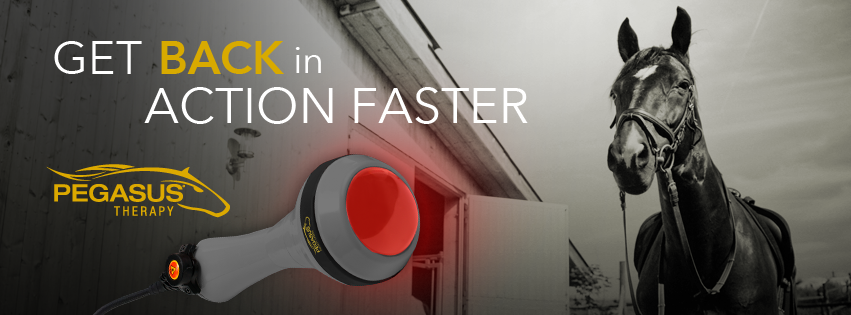Every little thing You Required to Find Out About Equine Therapy for Mental Wellness
Every little thing You Required to Find Out About Equine Therapy for Mental Wellness
Blog Article
Assessing the Performance of Laser Therapy in Horse Treatment for Injury Rehab
The examination of laser treatment's efficiency in equine injury recovery depends upon multiple variables, including recovery time, pain reduction, and cells regrowth. Clinical research studies recommend significant improvements in conditions like tendonitis and osteo arthritis, credited to boosted mobile function and elevated ATP production. Veterinarians often observe premium end results with laser therapy contrasted to traditional techniques, positioning it as a critical component in equine treatment. Nevertheless, the necessity for constant tracking and tailored therapy strategies can not be overemphasized. What specific clinical proof sustains these claims, and how do vets execute these protocols in method?
Comprehending Laser Treatment
Laser therapy has actually come to be an essential tool in veterinary medicine, specifically in the therapy of equine conditions. Known for its non-invasive nature and efficiency, laser treatment entails the application of certain wavelengths of light to promote cells repair work and lower inflammation. This therapeutic method is progressively favored for its ability to increase the healing procedure in steeds experiencing a range of musculoskeletal injuries and persistent conditions.
The primary device behind laser treatment is its capability to boost mobile features. Additionally, laser treatment advertises vasodilation, enhancing blood flow and oxygen distribution to damaged tissues, thus speeding up recovery.
In equine medication, laser therapy is specifically useful for conditions such as tendonitis, osteo arthritis, and injury recovery. The technique is admired for its pain-relieving buildings, allowing steeds to reclaim mobility and function much more rapidly. Veterinarians also value its very little negative effects contrasted to various other therapy techniques, making it a reliable and risk-free option for equine care.

Exactly How Laser Treatment Functions

Upon absorption, these photons set off a series of biochemical changes, boosting mitochondrial function and leading to raised adenosine triphosphate (ATP) production. This surge in ATP speeds up mobile metabolic process, promoting cells fixing and regeneration. In addition, laser treatment modulates inflammatory feedbacks by affecting cytokine degrees and reducing oxidative tension, thereby alleviating discomfort and swelling.
Another significant aspect of laser therapy is its role in improving microcirculation. The therapy promotes vasodilation, improving blood flow and oxygen delivery to broken cells (Equine Therapy). This assists in the elimination of cellular debris and supports the expansion of fibroblasts and collagen synthesis, crucial for injury recovery
Scientific Proof
The efficacy of laser treatment in equine therapy has been corroborated with different professional studies, showcasing its healing possible across a range of conditions. Several controlled trials and empirical studies have documented significant enhancements in cells fixing, pain reduction, and general rehab timelines. A research study conducted by Turner et al. (2012) showed that equines treated with low-level laser treatment (LLLT) for ligament injuries displayed sped up healing contrasted to those receiving traditional therapies. The study highlighted a significant reduction in anchor swelling and improved collagen formation.
In a similar way, study by Johnson and colleagues (2015) focused on equine muscular tissue injuries, exposing that laser therapy dramatically expedited muscular tissue fiber regeneration and decreased muscle rigidity. Clinical assessments have shown that laser treatment can reduce persistent conditions such as osteo arthritis.
Veterinarian Insights

Vets also appreciate the versatility of laser therapy. It can be employed for a variety of problems, from shallow wounds to much deeper bone and joint injuries. Dr. Emily Brown highlights its utility in dealing with conditions like tendonitis and osteo arthritis, where conventional treatments often drop short. She mentions that laser therapy can be tailored to the details needs of each steed, guaranteeing optimum results.
Moreover, veterinarians value the capacity to integrate laser treatment with other therapy modalities. This multimodal approach can enhance overall therapy efficacy, providing a thorough remedy for equine rehab. Such endorsements from skilled professionals highlight the expanding acceptance and application of laser therapy in equine medication.
Practical Considerations
An essential aspect of implementing laser therapy in equine therapy includes understanding the practical considerations that guarantee its effectiveness and security. Most importantly, it is vital to choose the suitable laser device, as different types differ in wavelength, power, and penetration depth. Equine Therapy. Veterinarians have to be fluent in these specifications to tailor treatment protocols properly to every injury type
Moreover, the frequency and period of laser therapy sessions require cautious planning to make the more information most of healing benefits while reducing any type of possible damaging effects. Constant surveillance of the horse's feedback to therapy can direct required changes in the treatment program. Establishing a risk-free and regulated atmosphere throughout therapies is additionally important to prevent unexpected direct exposure to laser exhausts, which can harm both the equine and the trainer.
Training and accreditation of workers administering laser therapy are critical to ensure proper technique and to promote security standards. Furthermore, keeping accurate records of each session, including laser settings and observed end results, is important for evaluating the overall performance of the therapy and for news making data-driven decisions.
Conclusion
Laser therapy has actually emerged as an effective method in equine injury rehabilitation, providing substantial benefits in healing time, discomfort relief, and tissue healing. For optimum results, constant tracking and personalized treatment protocols continue to be important in leveraging the complete possibility of laser treatment in equine treatment.
Report this page